[ad_1]
For nonprofits and charities, every penny counts. And so does every source of traffic to their websites, including organic traffic from search engines like Google. So what can these organizations do to increase the influx of visitors (and hopefully donors) arriving through that channel? Of course, the answer is to step up their SEO game.
In this article, we’ll cover some definitions, free tools, and 13 SEO tips. You don’t need to be an SEO veteran to apply these tips. Nor do you need to be in the business of generating tons of content like Wikipedia to get people through your door. Ready? Here we go:
Search engine optimization (SEO) for nonprofits and charities is the process of optimizing websites to increase visibility on search engine results pages (SERPs) when people look for information related to that organization’s cause, e.g., volunteering, fundraising, events, education, etc.
To implement the tips featured in this article, you’ll need a couple of free tools. But don’t hurry to get them now. You can do it later once you choose the tips that you want to use.
- Ahrefs Webmaster Tools – AWT is our free tool that allows you to improve your website’s SEO performance and get more traffic from search. AWT can show you information like all known keywords your site ranks for, show all backlinks, and perform technical audits automatically, among other things.
- A keyword research tool – Some free ones are Ahrefs’ free keyword generator, Keyword Surfer, or Google Keyword Planner.
- Google with search operators – In case you haven’t had the occasion to use those, search operators allow for customizing search results. For example, you can tell Google to only show mentions of your organization on a particular website.
Now that we know what tools to use, let’s look at 13 actionable tips that can boost traffic.
First things first. Let’s talk about your website’s technical fundamentals. They may need a little work. But if you don’t get them in order first, you risk undermining your SEO efforts in the long run.
I’m talking about things like issues with crawling and indexing, missing meta tags, slow loading times, and practices that result in bad user experiences (e.g., pop-ups). It happens to everyone, businesses and nonprofits alike.
So before you implement any other SEO tips, do these five things:
- Use Ahrefs Webmaster Tools to monitor your website’s SEO health – This tool will regularly monitor your website for over 100 SEO health issues. All you need to do is fix the issues that AWT brings to your attention.
- Get rid of pop-ups – Or at least most of your pop-ups. These include sign-up forms, exit forms, etc. Do the same for any banners that shift the layout.
- Make sure your website’s layout is clear, consistent, and usable
- Optimize your website for mobile devices – Over 50% of website traffic comes from mobile devices. On top of that, Google indexes and ranks content based on mobile versions of the websites (mobile-first indexing).
- Optimize your website for Core Web Vitals
Pro tip
For checking multiple webpages’ speed at scale, you can use Ahrefs Webmaster Tools too. Apart from showing metrics like Time to First Byte (TTFB), it also supports Core Web Vitals.
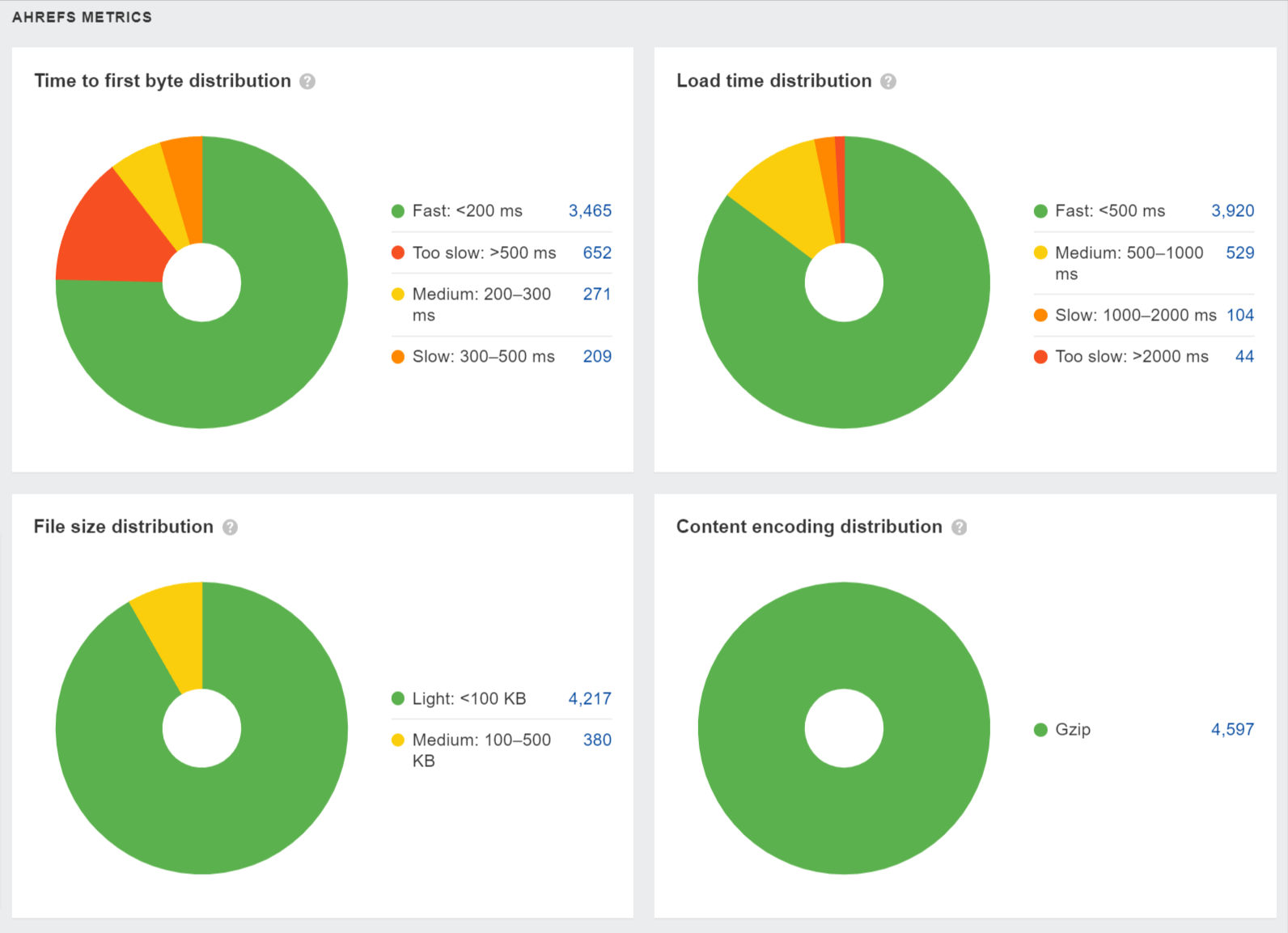
The numbers in blue next to the metrics will direct you to exact pages within a certain category. This way, you will know which pages need attention.
Recommended reading: The Beginner’s Guide to Technical SEO
Keywords related to nonprofits and charities can be extremely competitive.
In times like these, your best chance to be somehow included in that top 10 is to get listed on the pages that rank.
So if there’s a list of charities ranking in the top 10, that may be your best chance to get a piece of that search demand.
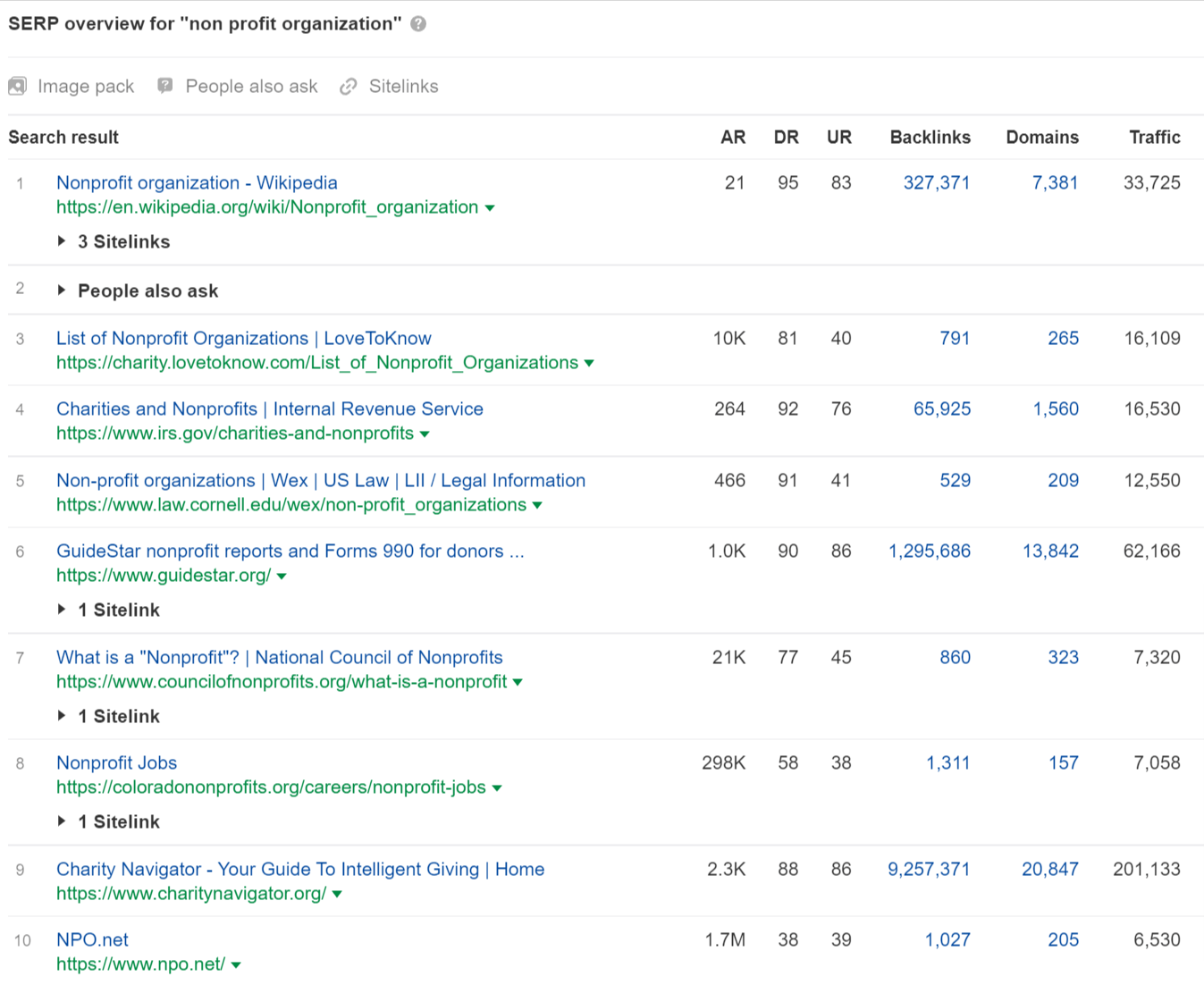
Notice any nonprofit organizations you know here? Exactly. Most of the search results for the query “non profit organization” are lists and directories of organizations. As shown above, they are super hard to outrank.
Moreover, that may be your best shot at credibility. In this case, if the search intent suggests that people are looking for a list of nonprofit organizations, a “nonpartisan” result is likely more credible.
But there’s more to that tactic. Yes, you will get visibility and traffic. But if the site that is going to feature you also links to your website, that will be a new backlink for you. And each additional site that chooses to do things similarly will, of course, give you another backlink.
Why do you need backlinks? Because backlinks are still one of the strongest ranking factors. Generally, the more backlinks a page gets, the higher it ranks and the more traffic it gets (study).
You will be able to see all links pointing to your site using Ahrefs Webmaster Tools.
Nonprofits and charities commonly use PR. Hence, they get a lot of coverage from the media and partners. Interestingly enough, that tactic can bring SEO benefits too if the organization’s mentions are turned to links. Of course, that is not always the case:

You can find mentions of your organization using Google with the help of search operators. That’s exactly how I found the example above.
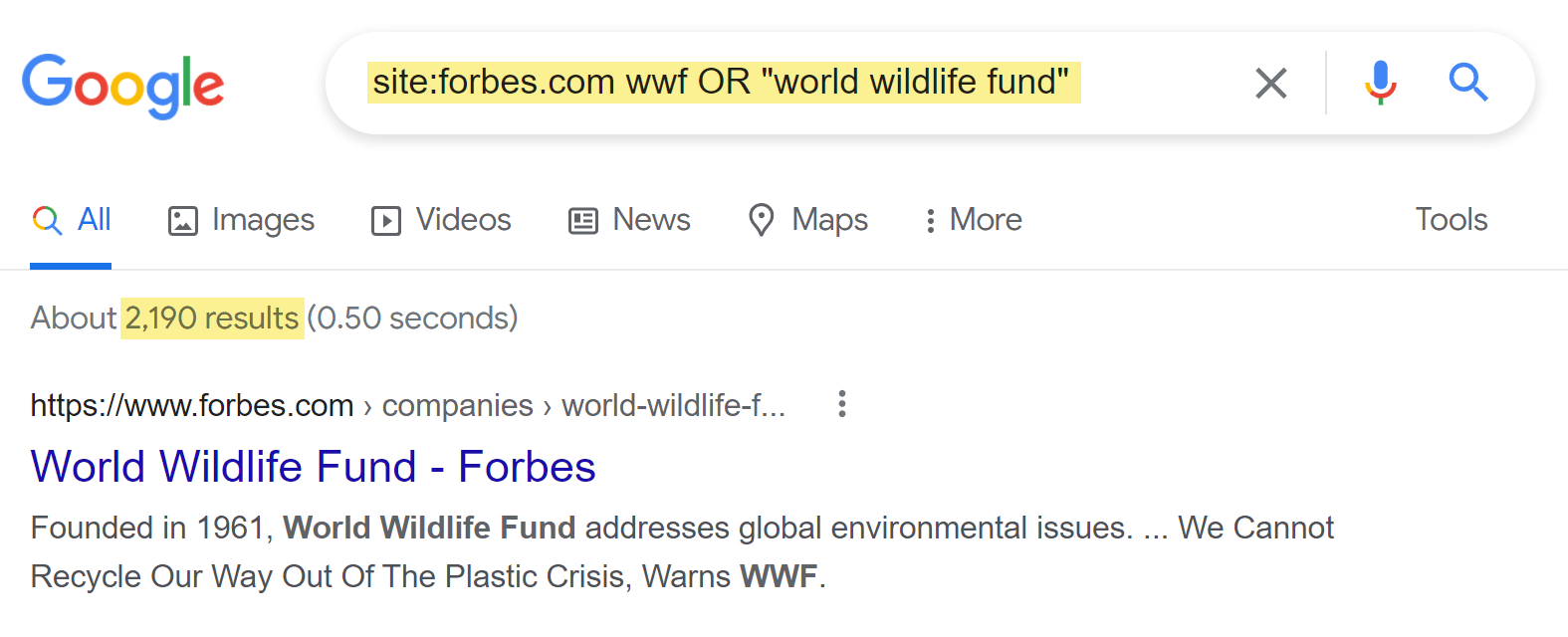
Of course, you can search the entire indexed internet for any mentions of your organization in any form.
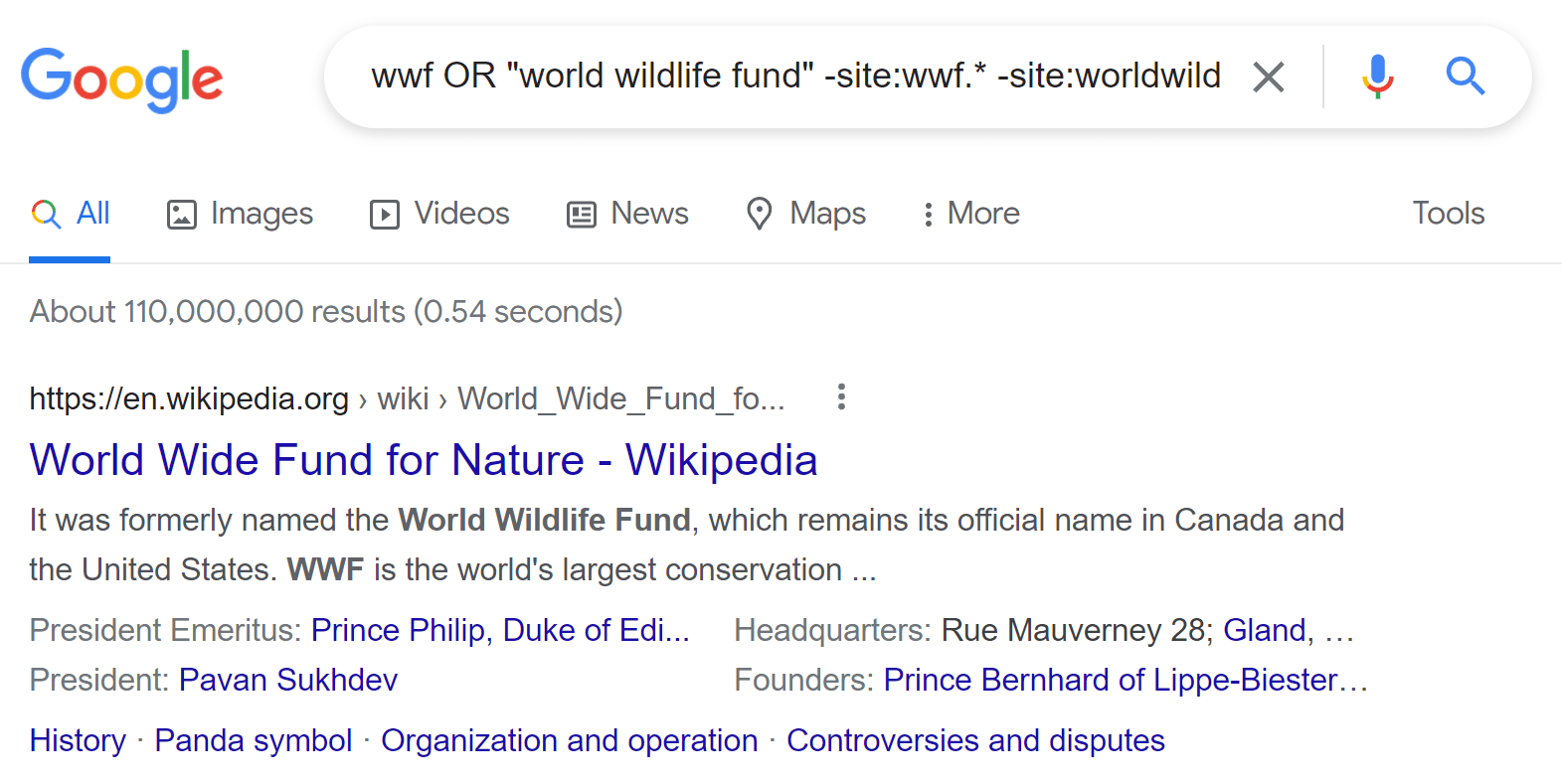
The above query goes like this: wwf OR “world wildlife fund” ‑site:wwf.* ‑site:worldwildlife.* This basically means “show me pages that include ‘wwf’ or ‘world wildlife fund’ but exclude any site that starts with ‘wwf’ or ‘worldwildlife.’”
Finding mentions is the first step in the process. You still need to filter those results for unlinked mentions. We cover the entire process of finding unlinked mentions for any site in this tutorial.
Once you find your link opportunities, you need to reach out to the authors or site owners and simply ask them to link to you.
Naturally, the best way to get linked mentions is to ask for them upfront. A small “detail” like this can easily get overlooked in the heat of a PR campaign. Thus, it’s a good idea to include a mention of that in your standard operating procedures.
Media coverage is the lifeblood of nonprofit organizations. Naturally, it increases brand awareness and shapes PR. And if that coverage is online, it can also help improve rankings on search engines.
For this tip, I want to focus on a well-known SEO tactic: answering journalist requests on sites like HARO, ResponseSource, ProfNet, or SourceBottle. Additionally, you can scan Twitter for hashtags like #journorequest.
#journorequest for a CNN report on the cost of living in the UK. I’m looking to speak to food banks, charities and community groups in London supporting people manage rising energy and food prices.
— Anna Cooban (@annacooban) February 7, 2022
The idea is simple:
- Sign up for one of the services mentioned above. Don’t forget to subscribe to the type of requests you want to get.
- Answer requests that relate to topics you are an expert on as soon as possible.
- If a journalist chooses your pitch, you’ll be quoted in their text and will most probably get a link to your organization.
Why is this tactic effective for SEO? Because links from the media will usually be some of the most authoritative backlinks you can build to your site.

While services like HARO make the connection between journalists and sources easier, there is another side of that coin: Journalists get a lot of pitches. It can be quite hard to break through. To increase your chances of being picked by journos, we’ve got just the right guide: How to Build Backlinks and Get Press Using HARO [Case Study].
This tip is another way to build backlinks and get more visibility while you’re at it.
Guest blogging is about contributing guest articles on third-party websites (not only blogs). And it’s all over the internet. Here’s an example guest article from the American Nurses Association:
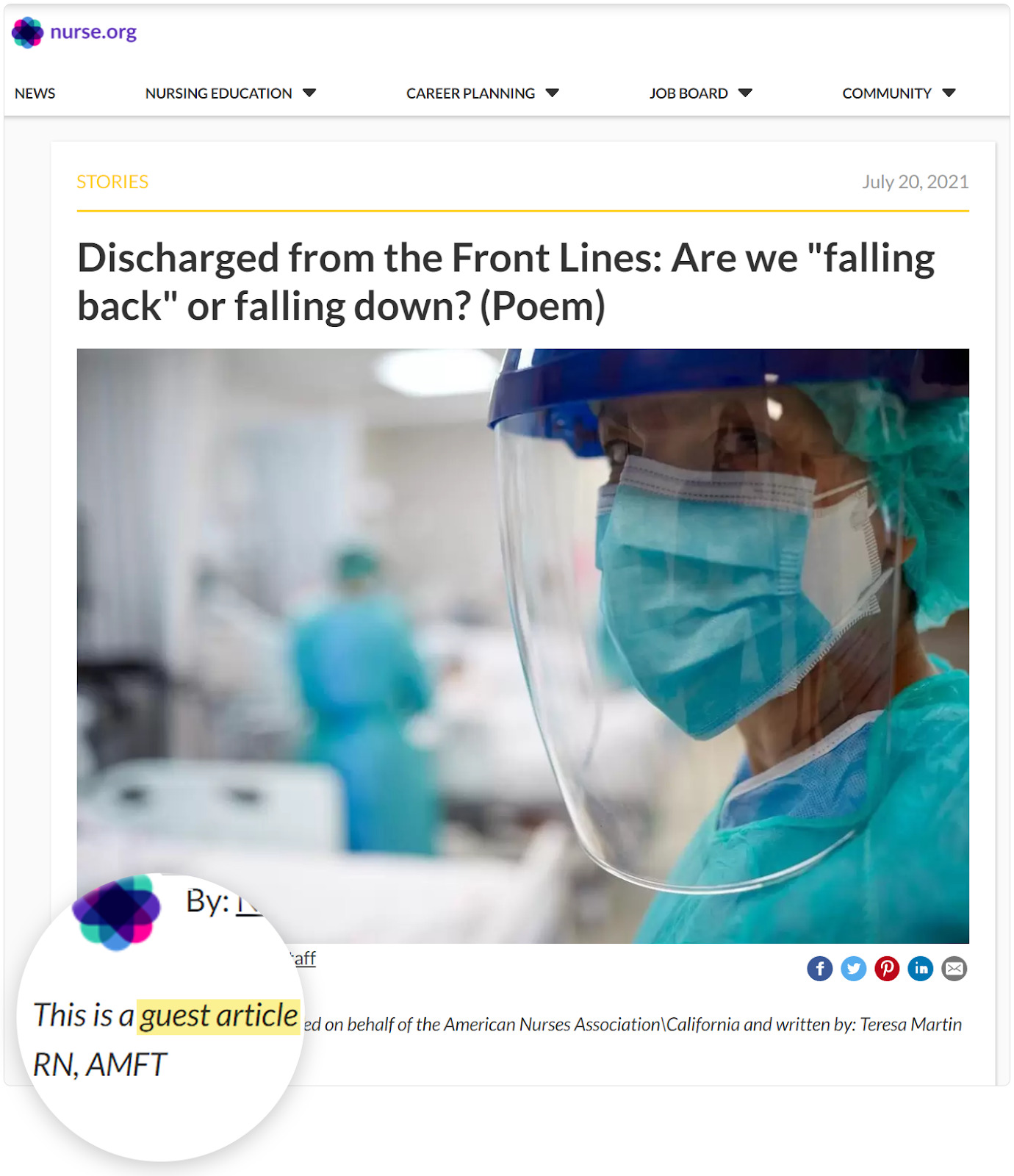
Whether you’re going to pitch articles for links or for the ability to get in front of somebody else’s audience, that’s entirely up to you. Guest blogging is good for both. However you want to approach it, just remember one thing: aim for high-quality websites.
Finding guest blogging opportunities can be as easy as plugging into Google “[your topic] ‘write for us’” or “[your topic] ‘guest post.’” But if you want to go pro and find these opportunities at scale (plus effectively filter them), see how we do it in this tutorial.
Here’s a great illustration of this tip. It’s called “Top 10 Facts About Pandas,” and it’s an article from WWF.
This is how it looks on the front side of things:

Ten interesting facts, 10 absolutely cute pictures, and a call to action: adopt a panda.
And here’s what’s happening under the hood—tons of organic traffic each month:
With this article about pandas, WWF targeted an educational keyword to leverage the search potential of this topic—this is what drives all that organic traffic you see above. Notice the “call to action” button at the top? From 10 facts about pandas to adopting a panda, those are clever ways of increasing awareness about protecting this species.
And by the way, the other button leads to more pages like this. So what we can see here is not just a one-off SEO stunt. It’s an entire strategy.
A fair portion of educational keywords is written as questions, making the keywords easier to find. Google even suggests those in almost every search via the PAA box:
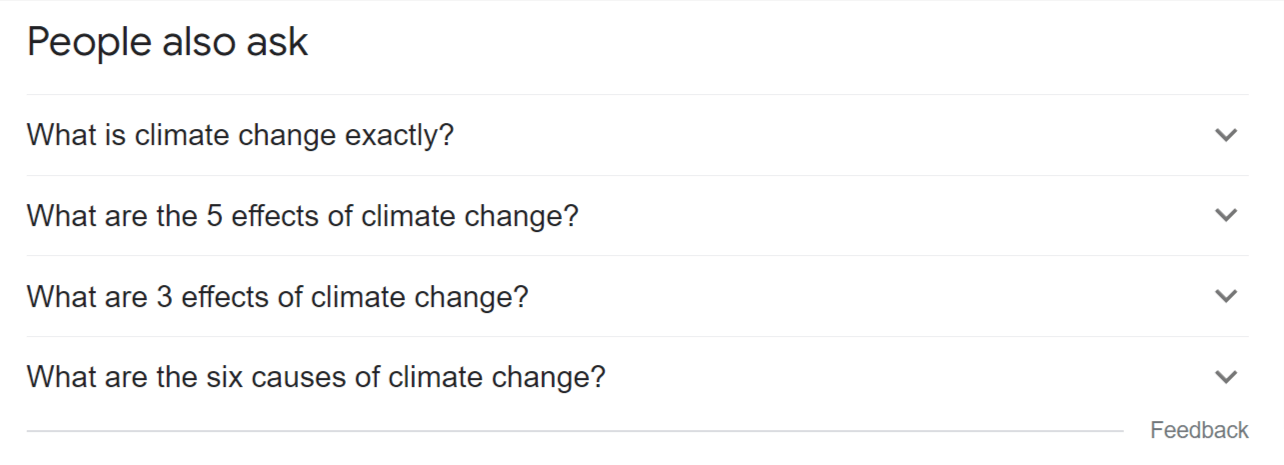
The “People also ask” box for the query “climate change.”
You can use a keyword tool to get those questions’ SEO metrics and browse them easily:
Statistical keywords imply the use of statistical data to best serve the intent behind the search.
Why should you go after these keywords? Two reasons. First, if there is search demand for them, they can generate organic traffic to your website and make more people aware of your cause. Secondly, they are great “link earners.”
For example, the keyword “human rights issues 2020” is something that is best answered by providing the actual statistics for this problem. And some nonprofits do that:
Let’s take a closer look at the report ranking #1. This report from Human Rights Watch (one of the many reports in the series) generates over 2.5K monthly visits and about 2K backlinks.
The slope of traffic you can see in the graph above is because the report already became outdated in Q1 of 2021.
This brings us to another point: The important thing to remember about content targeting statistical keywords (including reports) is to keep the content up to date.
Do a small test. Google “human rights issues 2020.” Then “human rights issues 2021.” Now compare the results. I think you will easily spot the same websites with the same kind of content that’s updated according to the year.
There are certain topics that are best covered by experts. It’s true in life and true in SEO too. We’re talking about the so-called YMYL (Your Money or Your Life) topics. According to Google’s Quality Raters Guidelines, these topics are:
- News and current events.
- Civics, government, and law.
- Finance.
- Shopping.
- Health and safety.
- Groups of people (information about or claims related to groups of people, including but not limited to those grouped on the basis of race or ethnic origin, religion, disability, age, nationality, veteran status, sexual orientation, gender, or gender identity).
- Other topics related to big decisions or important aspects of…
[ad_2]


